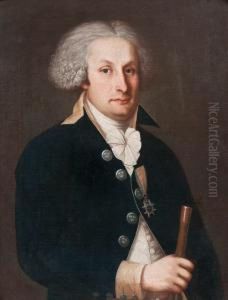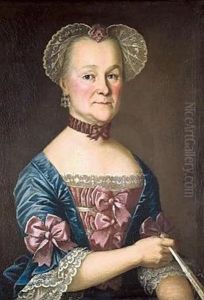Nils Schillmark Paintings
Nils Schillmark was a Swedish artist born in 1754 in Piteå, a town in Norrbotten County, Sweden. Schillmark's artistic journey began in his homeland, but his ambitions led him to broaden his horizons and seek training beyond the borders of Sweden. In pursuit of artistic growth, he traveled to Paris, which was a major center for art and culture in the 18th century. There, he was significantly influenced by the French painting style, which would come to shape his artistic approach.
During his time in France, Schillmark honed his skills and immersed himself in the rich artistic environment, which was particularly known for its Rococo and Neoclassical movements. He studied under the guidance of French painters, absorbing the techniques and sensibilities that characterized the era's sophisticated tastes. His exposure to the French art scene allowed him to develop a style that blended his Swedish origins with the elegance and refinement of French art.
Schillmark specialized in portraiture and genre painting, with a focus on capturing the essence of his subjects and the subtleties of social interactions. His portraits often depicted members of the aristocracy and the burgeoning middle class, reflecting the social dynamics of his time. The artist's genre scenes were also well received, as they illustrated everyday life with a keen eye for detail and a gentle touch of sentimentality.
Returning to Sweden, Schillmark's French-influenced style found favor among the Swedish elite. He became known for his ability to infuse his portraits with a sense of character and liveliness, which resonated with his patrons. His works were not only a testament to his technical skill but also to his understanding of the cultural and aesthetic expectations of his clientele.
Nils Schillmark's contributions to Swedish art were cut short when he passed away in 1804. Despite his relatively brief career, his work left a lasting impression on Swedish portraiture, and he remains an important figure in the history of Swedish art. His paintings are cherished for their blend of Nordic sensibilities with French artistic elegance, and they continue to be studied and admired for their historical significance and aesthetic beauty.


